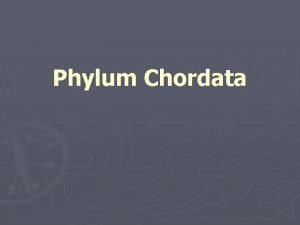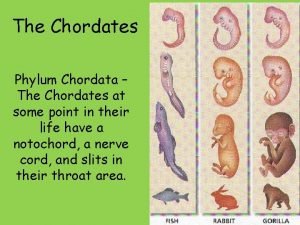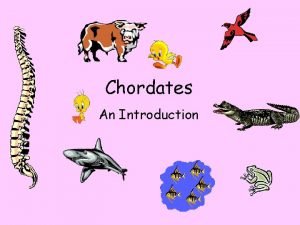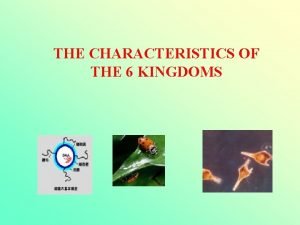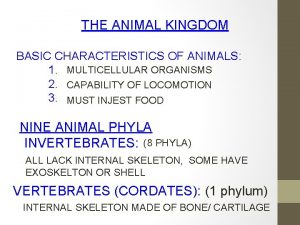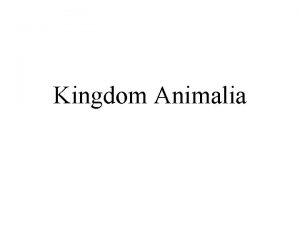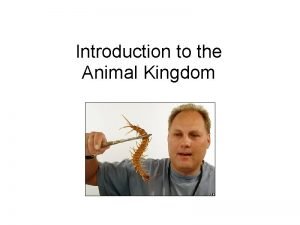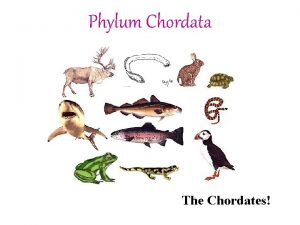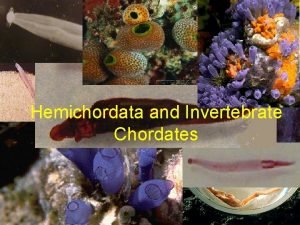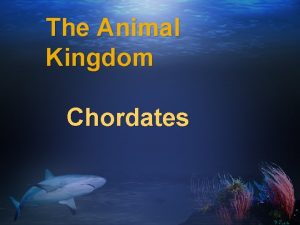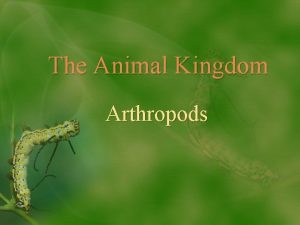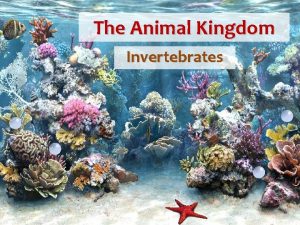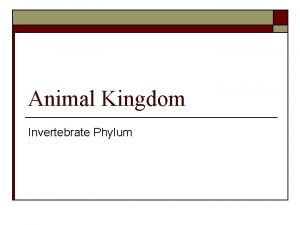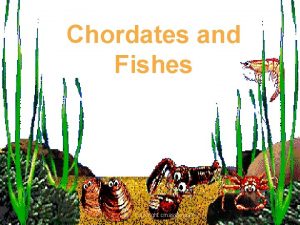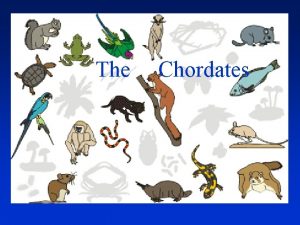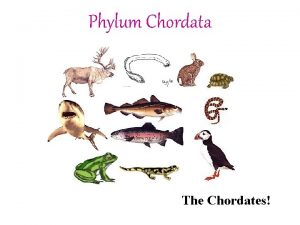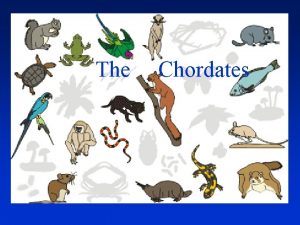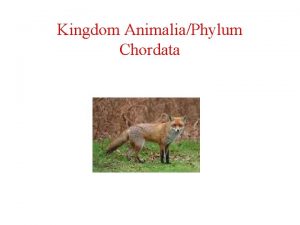Animal Kingdom Chordates General characteristics of all chordates












- Slides: 12

Animal Kingdom: Chordates General characteristics of all chordates: 1. Must have a notochord that at some time in their lives (becomes vertebral column in vertebrates) 2. Dorsal tubular nerve cord that forms the spinal cord 3. Pharyngeal pouches 4. Post-anal tail There are three subphyla of the phylum chordata: 1. Subphylum Urochordata 2. Subphylum cephalochordata 3. Subphylum vertebrata

Subphylum Urochordata All are marine Most common member is the sea squirts or tunicates Only larva show chordate characterisitcs Adult urochordate are very simple & even lack a definite head Larva is freeswimming, adults are sessile

Subphylum Cephalochordata Live in shallow water near seacoasts Have notochord, pharyngeal pouches, & dorsal nerve cord throughout entire life Called lancelets Have a definite head with sensory organs Use gill slits for respiration & filter feeding

Subphylum Vertebrata Largest subphylum of chordates which include humans Possess bones called vertebrae which surround & protect the nerve cord Vertebrae develop from & replace the notochord Examples of vertebrates are: fish, amphibians, reptiles, birds, mammals

Fish Most common vertebrates with longest fossil record Made up of 3 classes: 1. Agnatha (jawless fish)= hagfish & lamprey 2. Chondrichthyes (cartilaginous fish)= sharks, skates, rays 3. Osteichthyes (bony fish)= perch, trout, walleye All have gills for exchanging gases in water Have paired pectoral and pelvic fins Possess a 2 -chambered heart with closed circulatory system Reproduce by producing eggs or sperm cells for external fertilization All are ectotherms (cold-blooded animals) All are aquatic vertebrates with scales, fins, gills

Class Amphibia (Amphibians) Vertebrates that have aquatic larva & terrestrial adults Hatch from eggs like fishlike larva Breath air with lungs as adults Frogs are carnivores with tongue & teeth that are specialized for holding and capturing prey Frogs have a 3 -chambered heart with a closed circulatory system Respiration (exchange of gases) takes place on lung surfaces, moist skin, and on inner lining of mouth Reproduction of frogs takes place in water Fertilization & development are external All are ectotherms (cold-blooded) Lack scales and claws Examples: frogs, toads, salamanders, newts

Class Reptilia (Reptiles) Have lungs, scaly skin, and specialized eggs Live out of water & are well adapted to life on land Have impermeable skin that keeps them from drying out on land Fertilization is internal, eggs are large & shelled Development occurs entirely within the egg on land Respiration occurs within highly folded lungs Have a partially (the wall separating the left & right ventricles is not completely formed) 4 chambered heart Have a closed circulatory system All are ectotherms Examples: snakes, lizards, turtles

Class Aves (Birds) Have outer covering of feathers that aid in flight, insulation, and communication with other birds Have amniotic eggs and internal fertilization Have two legs for perching & walking & front limbs that are wings Have a well-developed nervous system Have claws and beaks Most are capable of flight and possess air sacs, hollow skeletons, lack of teeth, lack of urinary system (liquid wastes are excreted with solid waste) Capable of rapid digestion & excretion Have a 4 chambered heart with a closed circulatory system All are endotherms (warm-blooded) Examples: ostrich, owls, eagles, sparrows

Class Mammalia (Mammals) Primitive mammals existed at the time of dinosaurs Have large, wrinkled brains that allow welldeveloped sense organs All are endotherms that are covered with fur or hair Fertilization is internal with live birth instead of eggs being laid (excludes monotremes) Females possess mammary glands to nurse young Have a 4 chambered heart with a diaphragm Have a high survival rate among young due to extended parental care Must breathe air Examples: humans, lions, whales, duck-billed platypus

Brain Comparisons in Vertebrates

Vertebrate Heart Comparison

Evolutionary Trends in Vertebrates Have adapted from total dependence on water to living on land Have increased cephalization Increase in size and complexity of the cerebrum ◦ Part of brain that allows memory, analyzing, problem solving, conscious thought, senses Heart becomes more complex ◦ Fish with two-chambered heart ◦ Amphibians/reptiles with three-chambered heart ◦ Birds and mammals with four-chambered heart More chambers in heart allow better transportation of oxygen & nutrients to body cells
 Old kingdom middle kingdom new kingdom
Old kingdom middle kingdom new kingdom Old kingdom middle kingdom new kingdom
Old kingdom middle kingdom new kingdom Youtube egypt
Youtube egypt Mentohotep
Mentohotep Character of chordata
Character of chordata Four traits of chordates
Four traits of chordates Animalia kingdom chordates and vertebrates
Animalia kingdom chordates and vertebrates Animal kingdoms characteristics
Animal kingdoms characteristics Characteristics of the animal kingdom
Characteristics of the animal kingdom Kingdom animal characteristics
Kingdom animal characteristics Animal kingdom characteristics
Animal kingdom characteristics All chordates have
All chordates have Hemichordata
Hemichordata




